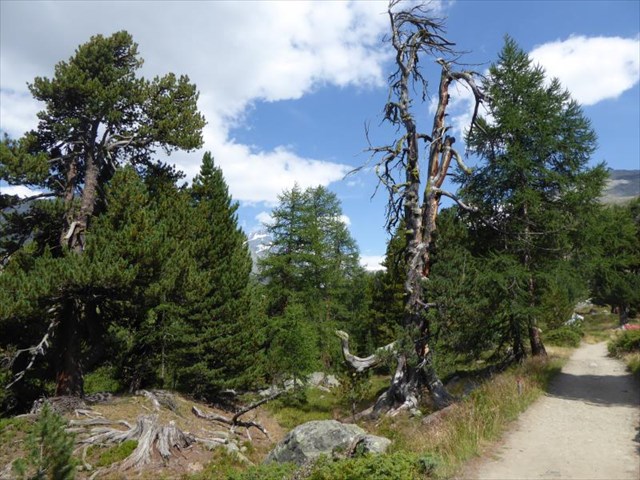
VORSICHT: Bitte cache wieder sorgfältig und auf gleiche Weise verstecken!
Auf dem Weg von Riffelalp zum Grünsee trifft man auf einige der schönsten Arven der Region.
Die Arve, auch Arbe oder Zirbelkiefer genannt, wächst in den Alpen und Karpaten. Der Baum kann bis 25 m hoch und bis zu 1000 Jahre alt werden. Von allen Gebirgsbäumen erträgt die Arve die tiefsten Temperaturen (bis -40° C) und ist äusserst widerstandsfähig, was sich unter anderem in ihrem knorrigen Erscheinungsbild äussert. Wird eine Arve durch äussere Einflüsse verletzt, verhindert das ausfliessende Harz sofort eine zusätzliche Schwächung durch andere Schädlinge wie Insekten oder Pilze.
Häufig – wie auch hier - bilden die Arven zusammen mit den Lärchen den typischen Arve-Lärchenwald der Hochgebirgsregionen. Während die Lärchen sich über vom Wind verwehten Samen vermehren, sorgt der Tannenhäher für die Verjüngung des Arvenbestandes: er hackt mit seinem Schnabel die Arvenzapfen auf, gelangt so zu den Samen und versteckt diese als Wintervorrat im Boden. Aus den vergessenen Samen wachsen dann junge Arven an den verschiedensten Orten.
ATTENTION: Please replace the cache with care and in the same way!
On the way from Riffelalp to Grünsee, you find some of the most beautiful stone pines of the region.
The stone pine, also called cembra pine, swiss pine or arolla pine, grows in the Alps and the Carpathian Mountains. The tree can reach 25 m and grow up to 1000 years. It bears the lowest temperatures among all mountain trees (-40° C) and is most resistant, which is illustrated by its gnarled appearance. When it gets injured by some external factors, resin immediately leaks out and protects the tree from further pests like insects or fungi.
Often – just as it happens here – stone pines form together with larches the so-called stone pine and larch forest of the high mountain regions. Whereas the larches reproduce by their seed spread out by the wind, the nutcracker is responsible for the reproduction of the stone pines: the bird pecks the cones with his bill, extracts the seed and hides it in the ground in order to have it as stock for the winter. From some hiding places,forgotten by the nutcracker, grow then new young stone pines.
Happy caching!